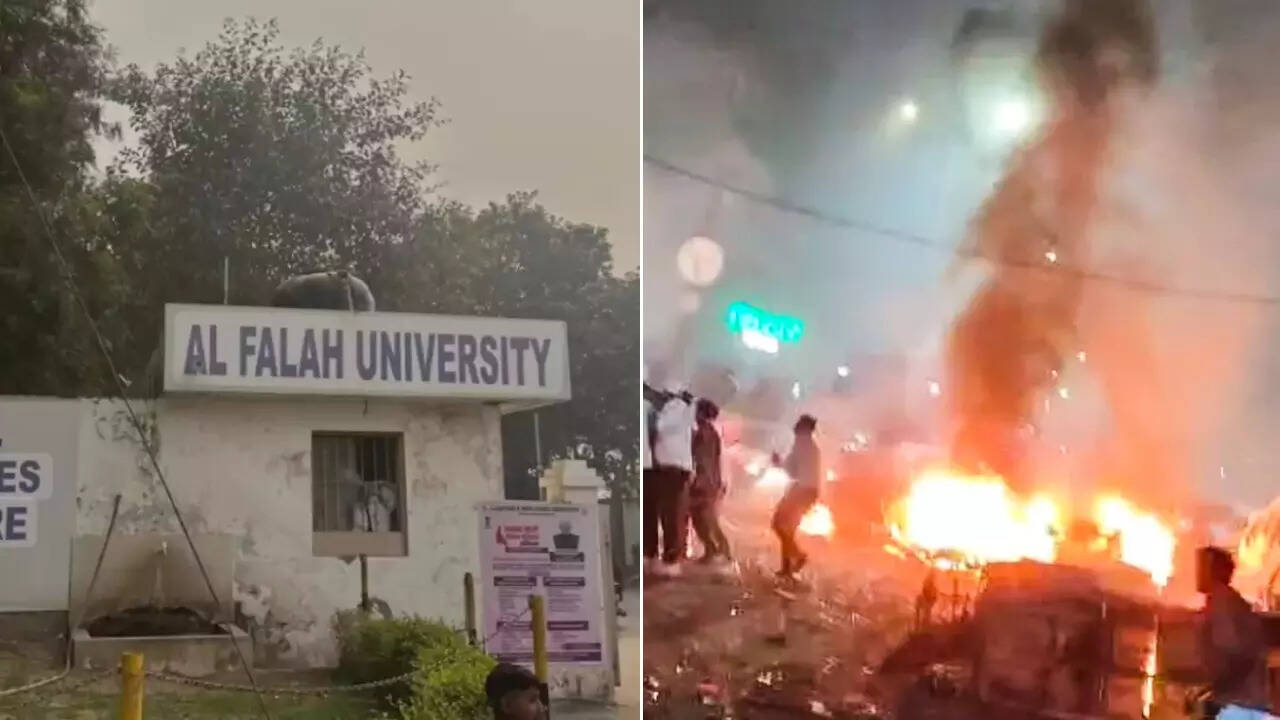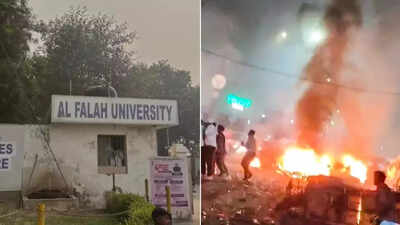NEW DELHI: The Enforcement Directorate (ED) on Tuesday arrested Jawad Ahmed Siddiqui, the founder of Al Falah University, which came under scrutiny after the alleged involvement of three of its MBBS course professors in a terror module behind the i20 car blast near Delhi’s Red Fort on November 10. Siddiqui, Chairman of Al Falah group, has been arrested under Section 19 of the Prevention of Money Laundering Act (PMLA), 2002.
The arrest took place today following a detailed investigation and analysis of evidence gathered during search action conducted at premises related to Al Falah group in the ongoing probe in an ECIR recorded by the ED under PMLA in connection with the Al Falah Group.The prime accused, Dr Umar Un Nabi, was a former student of the university located in Haryana’s Faridabad.The arrest comes, hours after the ED launched raids against the Al-Falah University along with its office in Okhla and the university’s promoters as initial probe had revealed discrepancies regarding UGC and NAAC recognition.The central agency conducted raids at 25 different places across the national capital, intensifying the Delhi car blast probe. Nine shell firms connected to the group, each registered at the same address, are now under scrutiny.
What triggered the probe?
ED initiated investigation against Al Falah group on the basis of 2 FIRs registered by the Crime Branch, Delhi Police, based on the allegations that Al-Falah University, Faridabad, has made fraudulent and misleading claims of NAAC accreditation with an intention to deceive students, parents, and stakeholders for wrongful gain. It has been further mentioned in FIR that Al-Falah University, Faridabad, has falsely claimed UGC recognition under Section 12(B) of the UGC Act, 1956 with oblique motive to cheat the aspirants, students, parents, guardians, stakeholders and general public to gain wrongfully and cause wrongful loss to them. The UGC clarified that Al-Falah University is included only under Section 2(f) as a State Private University, has never applied for inclusion under Section 12(B), and is not eligible for grants under that provision.
What did initial probe find?
Preliminary inquiries found out several red flags typical of shell operations, such as: No actual office space or noticeable utility usage at their listed locations; the same phone number and email ID being used for multiple companies and accounts. It was found that there had been no EPFO or ESIC filings despite the scale of business they claim; repeated overlap in directors or authorised signatories with poor KYC documentation; very limited salary payments made through formal banking channels and no HR records; and a pattern of companies being incorporated in a coordinated manner using identical contact details.
About the terror-tainted University
Al-Falah University, which started as an engineering college in 1997 in Faridabad’s Dhauj, is run by Al-Falah Charitable Trust registered in Delhi’s Okhla. It became a university in 2014 after UGC recognition. The trust is headed by Jawahar Ahmed Siddiqui, who is also chancellor of the varsity. The first medicine batch began in 2019, and it now has 200 MBBS seats and 50 MD seats.Over the years, the varsity has expanded its campus from 30 acres to over 70 acres through land acquisition from local villagers.University staffers, speaking anonymously, claimed the institution receives donations from Arab countries. “Foreign fundraisers from Arab nations visit the campus once a year. Though the college is run by a charitable trust, it has donors outside the country,” a staff member said.The varsity charges Rs 16 lakh annually for MBBS courses, while fees for MD programmes range from Rs 2.5 lakh for anatomy to around Rs 30 lakh per year for pediatrics.
What happened on 10/11
At least 15 people were killed and several others injured after a powerful explosion ripped through a Hyundai i20 car near the Lal Quila Metro Station on November 10.According to preliminary post-mortem findings, the victims sustained severe injuries, including multiple fractures and head trauma.The blast wave caused extensive internal damage, rupturing lungs, eardrums, and abdominal organs, while many victims showed deep wounds and heavy bleeding, suggesting they were thrown against hard surfaces by the force of the explosion.Forensic experts confirmed that no splinter traces were found on the bodies or clothing, and said the type of explosive used will be determined after laboratory analysis. Most injuries were concentrated on the upper body, head, and chest, officials said.












